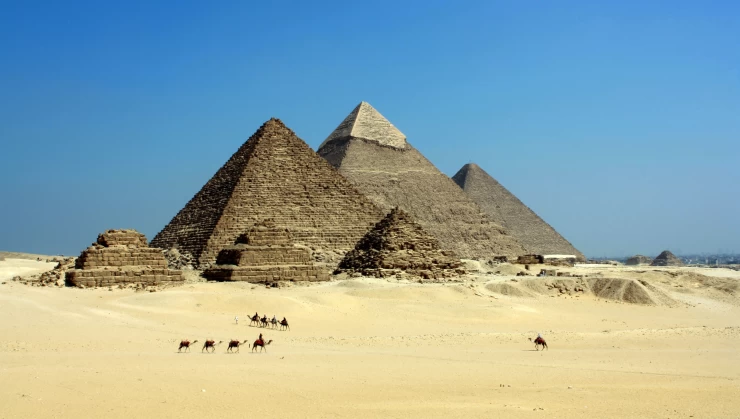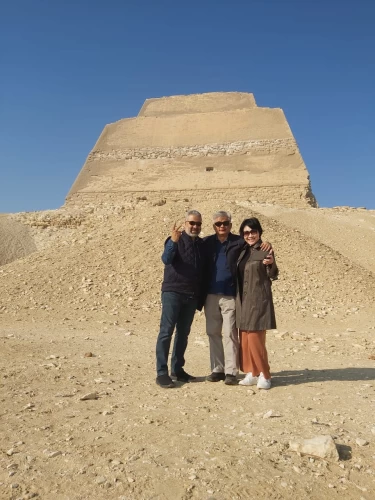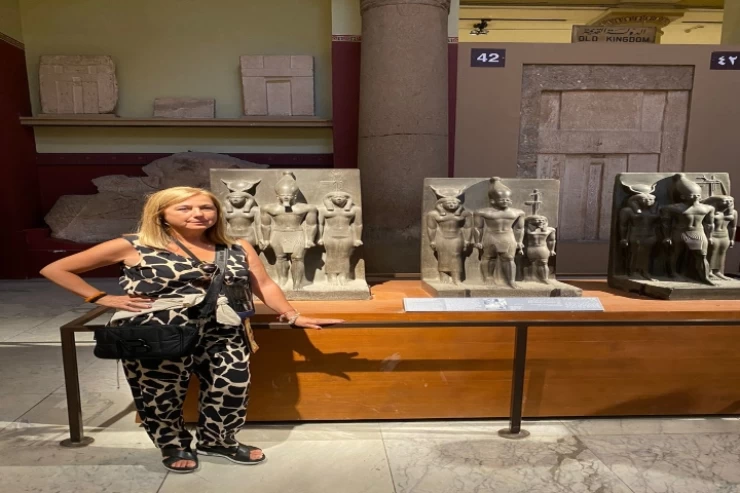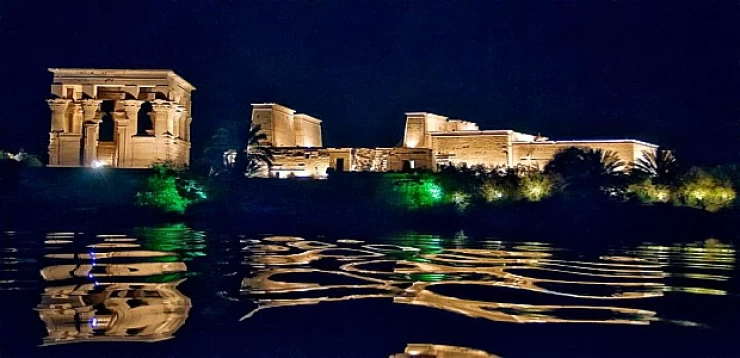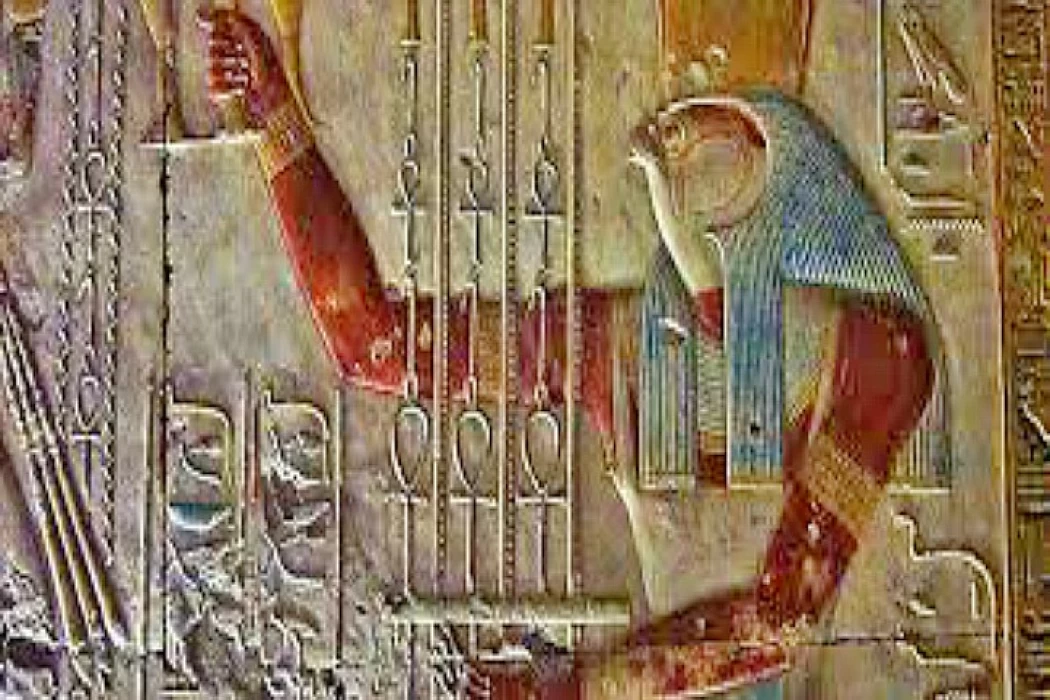
God Osiris | Egyptian God of the Afterlife and Resurrection
Ancient Egyptian Gods
According to the Egyptian religion, Osiris was killed by his evil brother Seth, who was the symbol of evil. With deception, Seth made Osiris lie down in a chest, which he immediately closed and threw into the Nile. The chest drifted and reached the shores of Lebanon, where it was finally found by Isis, who brought it back to Egypt.
Seth, however, managed to seize the chest and split Osiris' body into many parts that he scattered across Egypt. Isis then went in search of the limbs, reassembled the body, and revived Osiris to conceive Horus, who, using his mother's magical powers, defeated Seth and restored the divine order again.
In the Book of the Dead, there is a drawing of Osiris sitting on a throne in the afterlife with his wife Isis and his sister Nephthys next to him, with his four children around him, helping him in the judgment of a dead man.
How did Osiris judge the dead?
The ancient Egyptians always thought that Osiris made a simple test for every dead person. He gets his heart out of his body and puts it on one side of the steelyard, and on the other side of it, he would put a feather. If the feather was heavier than the dead person's heart, he would be eaten by Amamut (an animal with the body of a hippo, head of a lion, and the tail of a crocodile), and it would be his final fate as he was not a good person in his life. But if the heart was heavier than the feather, the dead person wore very silky clothes and went to the garden (heaven) because he was a good person in his earlier life. From the moment you arrive in Egypt, Egypt Tours will take care of your visit to the land of the Pharaohs thanks to our highly qualified guides specialized in Egyptology.
Osiris, the Afterlife, and Divine Judgment
According to Egyptian belief, Osiris was not only the ruler of the underworld but also the judge of the dead. The Book of the Dead illustrates a crucial scene where Osiris presides over the judgment of souls. The deceased person's heart was weighed against the feather of Ma’at, the goddess of truth and justice. If the heart was lighter than the feather, the soul was granted passage to the paradise of the Field of Reeds. However, if the heart was heavier, it was devoured by Amamut, a monstrous creature with the body of a hippo, the head of a lion, and the tail of a crocodile, condemning the soul to oblivion.
Osiris was assisted in this judgment by his wife, Isis, and his sister, Nephthys, along with his four children. This divine process reinforced the concept of moral righteousness, emphasizing that only those who lived virtuous lives would attain eternal peace.
According to the Egyptian religion, Osiris was killed by his evil brother Seth, who was the symbol of evil. With deception, Seth made Osiris lie down in a chest, which he immediately closed and threw into the Nile. The chest drifted and reached the shores of Lebanon, where it was finally found by Isis, who brought it back to Egypt.
Seth, however, managed to seize the chest and split Osiris' body into many parts that he scattered across Egypt. Isis then went in search of the limbs, reassembled the body, and revived Osiris to conceive Horus, who, using his mother's magical powers, defeated Seth and restored the divine order again.
In the Book of the Dead, there is a drawing of Osiris sitting on a throne in the afterlife with his wife Isis and his sister Nephthys next to him, with his four children around him, helping him in the judgment of a dead man.
The ancient Egyptians always thought that Osiris made a simple test for every dead person. He gets his heart out of his body and puts it on one side of the steelyard, and on the other side of it, he would put a feather. If the feather was heavier than the dead person's heart, he would be eaten by Amamut (an animal with the body of a hippo, head of a lion, and the tail of a crocodile), and it would be his final fate as he was not a good person in his life. But if the heart was heavier than the feather, the dead person wore very silky clothes and went to the garden (heaven) because he was a good person in his earlier life. From the moment you arrive in Egypt, Egypt Tours will take care of your visit to the land of the Pharaohs thanks to our highly qualified guides specialized in Egyptology.
According to Egyptian belief, Osiris was not only the ruler of the underworld but also the judge of the dead. The Book of the Dead illustrates a crucial scene where Osiris presides over the judgment of souls. The deceased person's heart was weighed against the feather of Ma’at, the goddess of truth and justice. If the heart was lighter than the feather, the soul was granted passage to the paradise of the Field of Reeds. However, if the heart was heavier, it was devoured by Amamut, a monstrous creature with the body of a hippo, the head of a lion, and the tail of a crocodile, condemning the soul to oblivion.
Osiris was assisted in this judgment by his wife, Isis, and his sister, Nephthys, along with his four children. This divine process reinforced the concept of moral righteousness, emphasizing that only those who lived virtuous lives would attain eternal peace.
The gods Osiris and Isis both had sons, one of whom was Horus. The ancient Egyptians were associated with the god Horus, which is the Hurrian name. The god Horus was mentioned frequently in ancient Egyptian mythology.Especially the legend of the conflict between Horus and Set, and that he took revenge on his uncle Set, because he killed his father, and was crowned king of the living, and every king who ruled Egypt ruled as Horus on earth.
Horus became the king of this earthly existence, while Osiris became the god of reckoning in the afterlife. Every king of Egypt ruled by a representative of Horus, and he sought the help of the god Horus in his actions and wars. Therefore, we find all the kings of Egypt named after Horus in one of their names (the king usually had 5 titles).
Archaeologists have denied the existence of a tomb for Osiris and confirmed that the Temple of Osirion does not contain any tomb for the god Osiris at all, because he is originally a mythical figure.
The name of the temple is derived from the name of this mythical figure, and perhaps for this reason myths are spreading about the existence of a tomb for him inside the temple.
Osiris:
- Symbol of reckoning and resurrection and head of the court of the dead in the afterlife among the ancient Pharaohs and Egyptians.
- It is essentially a symbol of fertility, and this is evident in its association with the planting and greening seasons.
- He appeared with a white crown on his head and also wore a crown on his head, which is the head of the general trinity "Osiris, Isis, Horus".







